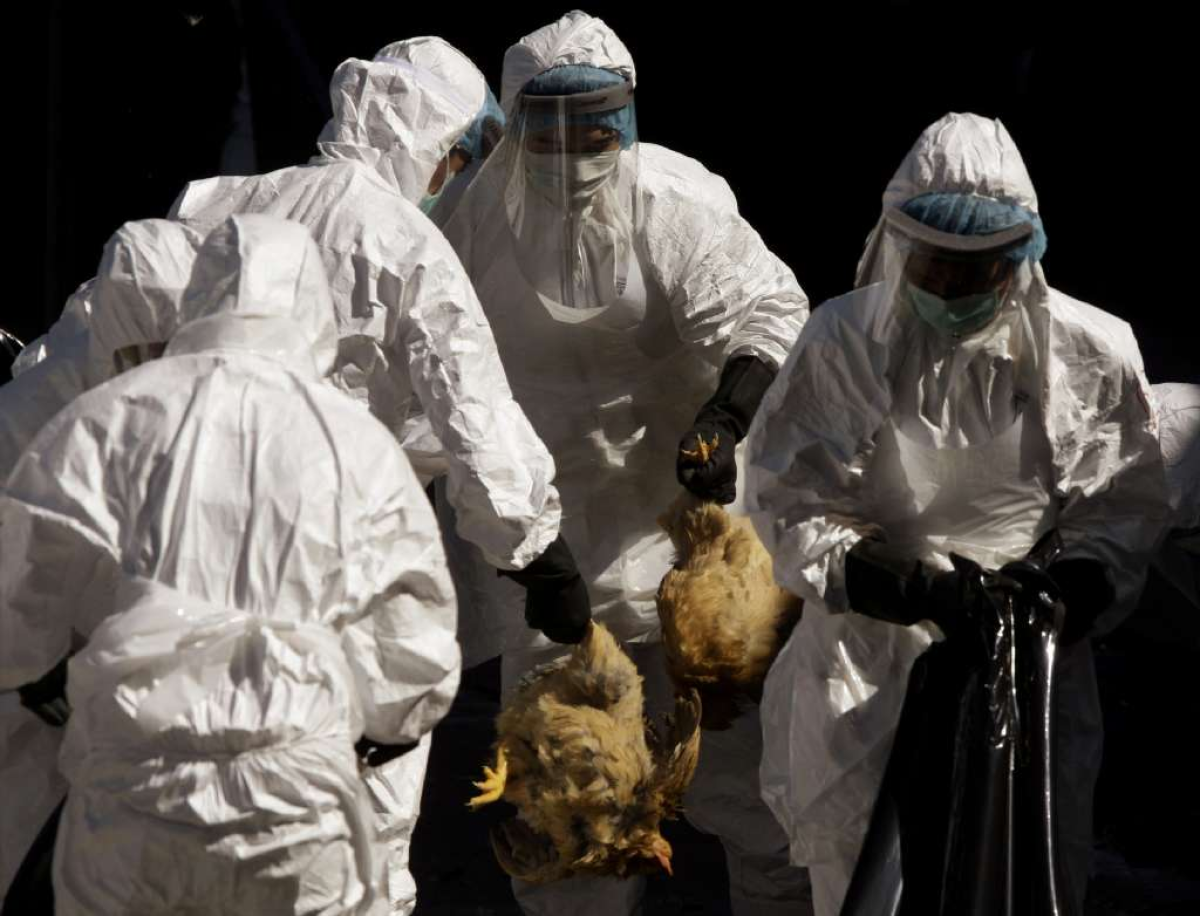Deadly H5N1 bird flu needs just 5 mutations to spread easily in people

- Share via
It’s a flu virus so deadly that scientists once halted research on the disease because governments feared it might be used by terrorists to stage a biological attack.
Yet despite the fact that the H5N1 avian influenza has killed 60% of the 650 humans known to be infected since it was identified in Hong Kong 17 years ago, the “bird flu” virus has yet to evolve a means of spreading easily among people.
Now Dutch researchers have found that the virus needs only five favorable gene mutations to become transmissible through coughing or sneezing, like regular flu viruses.
World health officials have long feared that the H5N1 virus will someday evolve a knack for airborne transmission, setting off a devastating pandemic. While the new study suggests the mutations needed are relatively few, it remains unclear whether they’re likely to happen outside the laboratory.
“This certainly does not mean that H5N1 is now more likely to cause a pandemic,” said Ron Fouchier, a virologist at Erasmus University Medical Center in Rotterdam, Netherlands, and coauthor of the study published Thursday in the journal Cell. “But it does mean that we should not exclude the possibility that it might happen.”
As with many other influenza studies, the scientists used ferrets as the stand-in for humans, because their immune system responds similarly to the disease.
Prior research had established that H5N1 could become contagious in ferrets if the virus was passed through a succession of animals, essentially forcing the virus to evolve at an accelerated rate. In those experiments, Fouchier and his colleagues found that the newly contagious viruses had accumulated nine or more mutations.
In the new study, the authors set out to determine the minimum number of mutations necessary for airborne infection.
To do this, the researchers took a strain of the virus that had previously infected a human and altered its genes in the lab. Then they sprayed the altered version of the virus into a ferret’s nose and placed the animal in a specially constructed cage with a second ferret who had not been exposed to the virus.
The layout of the cages prevented direct contact between the animals, but allowed them to share airflow. When the healthy ferret developed flu symptoms — ruffled fur, loss of appetite and lack of energy — researchers knew the virus had spread through the air.
By exposing ferrets and human tissue samples to a variety of genetically altered viruses, study authors identified five key gene mutations.
Two of them improved the virus’ ability to latch onto cells in the animal’s upper respiratory tract. Once there, it could enter the cell, disgorge its genetic material and cause the cell to mass-produce copies of the virus.
“Another mutation increases the stability of the virus,” Fouchier said. “The remaining mutations enable the virus to replicate more efficiently.”
[Updated at 3:48 p.m. PDT April 10: The altered virus was much less deadly than the natural version. Only two of the ferrets in the study died, but neither death was caused by the flu.
Fouchier said he thought this was because the virus attacked cells in the upper airway instead of the lower airway and was therefore less likely to cause pneumonia.]
Virologists who were not involved in the study said the findings were important, as they provided health authorities with a means of discerning whether mutations observed in the wild are dangerous to people.
“This is important work,” said Yoshihiro Kawaoka, a virologist at the University of Wisconsin School of Veterinary Medicine. “This could contribute to surveillance of avian influenza viruses in nature.”
Richard Webby, a virologist at St. Jude Children’s Research Hospital in Memphis, said that although the study provided a valuable list of genetic traits to look for, the most important question for scientists and health officials remained unanswered.
“The biggest unknown is whether the viruses are likely to gain the critical mutations naturally,” Webby said. “If they can appear readily, then it is very worrisome. If not, then there’s still a major hurdle that these viruses have to get over to become human-transmissible.”
Fouchier, Kawaoka and other researchers touched off an international biosecurity furor in 2011 when they demonstrated that the H5N1 virus could be made transmissible among ferrets. As a result of the controversy, the U.S. National Science Advisory Board for Biosecurity asked the virologists to omit some details of their work before publishing it in the journals Science and Nature. Scientists responded by imposing a temporary moratorium on their research.
Also, because of the Dutch government’s concern that the virus could be weaponized, it successfully sued Fouchier and now requires him to apply for and receive an “export permit” before publishing his studies.
Fouchier, who obtained such a permit for the Cell study, said he did not expect it to ignite the same amount of controversy as his past work.
“Certainly, there are still some people that would prefer that this type of research be discontinued,” Fouchier said. “We will continue the debate with these people, but we have to realize that it is impossible to reach a global consensus on everything — or anything.”







